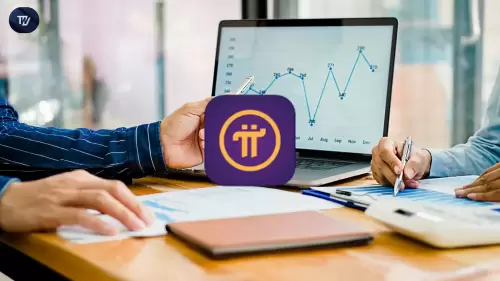 |
|
 |
|
 |
|
 |
|
 |
|
 |
|
 |
|
 |
|
 |
|
 |
|
 |
|
 |
|
 |
|
 |
|
 |
|
2015 年に開始された分散型プラットフォームおよび暗号通貨であるイーサリアムは、ブロックチェーン空間に革命をもたらしました。スマート コントラクトと分散型アプリケーション (dApp) の作成を可能にするプログラム可能なブロックチェーンを提供します。スマート コントラクトは契約を自動化し、仲介者を排除して効率を高めます。開発者はイーサリアムの Solidity 言語を活用して、金融サービスからゲーム プラットフォームに至るまでの dApp を構築します。イーサリアムのネイティブ暗号通貨であるイーサ (ETH) は、トランザクション手数料とガスとして機能し、ブロックの検証に対するマイナーの補償を行います。イーサリアム 2.0 は、プルーフ・オブ・ステークのコンセンサスとシャード チェーンを通じてスケーラビリティの問題に対処することを目的としています。このプラットフォームは分散型金融 (DeFi) と代替不可能なトークン (NFT) の台頭を促進し、新しいデジタル経済を促進しました。スケーラビリティや取引手数料などの課題は依然として存在しますが、イーサリアムのイノベーションへの取り組みにより、イーサリアムは分散型アプリケーションのためのスケーラブルで持続可能なプラットフォームとして位置づけられています。

What's the Buzz About Ethereum?
イーサリアムに関する話題は何ですか?
Ethereum, the brainchild of programmer Vitalik Buterin, has been making waves in the blockchain world since its inception in 2015. This decentralized platform and cryptocurrency has gone beyond Bitcoin's initial vision by offering a versatile and programmable blockchain that opens up a world of possibilities for smart contracts and decentralized applications (dApps).
プログラマーのヴィタリック・ブテリン氏の発案であるイーサリアムは、2015 年の創設以来、ブロックチェーンの世界で波紋を広げています。この分散型プラットフォームと暗号通貨は、スマートなアプリケーションの可能性の世界を開く多用途でプログラム可能なブロックチェーンを提供することで、ビットコインの当初のビジョンを超えています。契約と分散型アプリケーション (dApps)。
Smart Contracts and dApps: The Game-Changers
スマート コントラクトと dApps: ゲームチェンジャー
At the heart of Ethereum's innovation are smart contracts—self-executing contracts with coded terms. These contracts automatically execute and enforce agreements when predefined conditions are met. No more intermediaries, no more uncertainty. Transactions and agreements become more efficient, transparent, and trustless.
イーサリアムのイノベーションの中心となるのはスマート コントラクト、つまりコード化された条件で自動実行される契約です。これらの契約は、事前に定義された条件が満たされた場合に自動的に締結され、強制されます。仲介者も不要になり、不確実性もなくなりました。取引と契約はより効率的、透明性があり、トラストレスなものになります。
Developers have embraced Ethereum's Turing-complete programming language, Solidity, to create a wide range of dApps, spanning from financial services to gaming platforms. The possibilities are endless.
開発者はイーサリアムのチューリング完全プログラミング言語である Solidity を採用して、金融サービスからゲーム プラットフォームに至るまで幅広い dApps を作成しています。可能性は無限大。
Ether (ETH) and Gas: Fueling the Ethereum Ecosystem
イーサ (ETH) とガス: イーサリアム エコシステムの活性化
Ether (ETH) is Ethereum's native cryptocurrency, playing multiple roles within the network. Users pay for transaction fees and computational services with Ether, known as "gas." Gas is a measure of computational work performed on the Ethereum network, ensuring that resource-intensive actions are appropriately compensated.
イーサ (ETH) はイーサリアムのネイティブ暗号通貨であり、ネットワーク内で複数の役割を果たします。ユーザーは、「ガス」として知られるイーサで取引手数料と計算サービスの支払いを行います。ガスは、イーサリアム ネットワーク上で実行される計算作業の尺度であり、リソースを大量に消費するアクションが適切に補償されることを保証します。
Ether also serves as an incentive for miners who validate and add new blocks to the blockchain through a consensus mechanism known as proof-of-stake (transitioning from proof-of-work in Ethereum 2.0).
イーサは、プルーフ・オブ・ステーク (イーサリアム 2.0 のプルーフ・オブ・ワークからの移行) として知られるコンセンサス・メカニズムを通じて、新しいブロックを検証してブロックチェーンに追加するマイナーにとってもインセンティブとして機能します。
Ethereum 2.0: The Next Frontier in Scalability
イーサリアム 2.0: スケーラビリティの次のフロンティア
To address scalability issues, Ethereum is undergoing a significant upgrade known as Ethereum 2.0. This transition involves a shift from a proof-of-work to a proof-of-stake consensus mechanism, enhancing security and reducing energy consumption.
スケーラビリティの問題に対処するために、イーサリアムはイーサリアム 2.0 として知られる大幅なアップグレードを行っています。この移行には、プルーフ・オブ・ワークからプルーフ・オブ・ステークのコンセンサスメカニズムへの移行が含まれており、セキュリティが強化され、エネルギー消費が削減されます。
Ethereum 2.0 also introduces shard chains, allowing the network to process multiple transactions simultaneously, significantly improving scalability and performance.
イーサリアム 2.0 ではシャード チェーンも導入されており、ネットワークが複数のトランザクションを同時に処理できるようになり、スケーラビリティとパフォーマンスが大幅に向上します。
Decentralized Finance (DeFi) and Non-Fungible Tokens (NFTs): Ethereum's New Frontiers
分散型金融 (DeFi) と非代替トークン (NFT): イーサリアムの新たなフロンティア
Ethereum has been a catalyst for the rise of decentralized finance (DeFi). DeFi platforms built on Ethereum enable users to lend, borrow, trade, and earn interest on their cryptocurrencies without traditional financial intermediaries.
イーサリアムは分散型金融(DeFi)の台頭のきっかけとなってきました。イーサリアム上に構築された DeFi プラットフォームにより、ユーザーは従来の金融仲介業者なしで、暗号通貨の貸し借り、取引、利息の獲得が可能になります。
Additionally, Ethereum has become a hub for non-fungible tokens (NFTs), unique digital assets representing ownership of items such as art, collectibles, and virtual real estate. NFTs have gained widespread popularity for their use in digital art ownership and creating new digital economies.
さらに、イーサリアムは、芸術品、収集品、仮想不動産などのアイテムの所有権を表す独自のデジタル資産である非代替トークン (NFT) のハブとなっています。 NFTは、デジタルアートの所有権と新しいデジタル経済の創造に使用されることで広く人気を集めています。
Challenges and Upcoming Developments: The Road Ahead
課題と今後の展開: 今後の道のり
While Ethereum has been at the forefront of blockchain innovation, it faces challenges such as scalability and high transaction fees during times of network congestion. Ethereum 2.0 seeks to address these issues and further position Ethereum as a scalable and sustainable blockchain platform.
イーサリアムはブロックチェーン革新の最前線に立っていますが、スケーラビリティやネットワーク輻輳時の高額な取引手数料などの課題に直面しています。イーサリアム 2.0 は、これらの問題に対処し、イーサリアムをスケーラブルで持続可能なブロックチェーン プラットフォームとしてさらに位置づけることを目指しています。
Beyond being a cryptocurrency, Ethereum's impact extends to serving as a foundation for a wide range of decentralized applications and innovations. As Ethereum continues to evolve, its role in shaping the decentralized future of finance, gaming, and digital ownership remains significant.
イーサリアムの影響は、仮想通貨であるだけでなく、幅広い分散型アプリケーションやイノベーションの基盤としての役割にも及びます。イーサリアムは進化を続けていますが、金融、ゲーム、デジタル所有権の分散化された未来を形作る上でのその役割は依然として重要です。
DApps in Ethereum: Unleashing the Power of Decentralization
イーサリアムの DApps: 分散化の力を解き放つ
Decentralized Applications (dApps) represent a significant and transformative aspect of blockchain technology, enabling developers to create a wide array of applications that operate on a decentralized and trustless infrastructure. Ethereum's introduction of smart contracts paved the way for the development of dApps, marking a fundamental shift in how applications are designed, deployed, and interacted with.
分散型アプリケーション (dApps) は、ブロックチェーン テクノロジーの重要かつ変革的な側面を表しており、開発者は分散型のトラストレス インフラストラクチャ上で動作する幅広いアプリケーションを作成できます。イーサリアムによるスマート コントラクトの導入により、dApps 開発への道が開かれ、アプリケーションの設計、展開、操作方法に根本的な変化が生じました。
Smart Contracts and the Birth of DApps
スマートコントラクトとDAppsの誕生
Ethereum's smart contracts are self-executing contracts with the terms directly written into code. These contracts automatically execute and enforce agreements when predefined conditions are met. This programmable functionality forms the backbone of dApps on the Ethereum blockchain.
イーサリアムのスマートコントラクトは、条件がコードに直接書き込まれた自動実行コントラクトです。これらの契約は、事前に定義された条件が満たされた場合に自動的に締結され、強制されます。このプログラム可能な機能は、イーサリアム ブロックチェーン上の dApp のバックボーンを形成します。
Key Characteristics of Ethereum dApps
イーサリアム dApp の主な特徴
- Decentralization: Ethereum dApps operate on a decentralized network of nodes, ensuring that no single entity has control over the entire application. This decentralization enhances security and censorship resistance.
- Smart Contracts: DApps utilize smart contracts to define and automate the rules and logic of the application. Smart contracts are stored on the Ethereum blockchain and are executed by the network when triggered by specific conditions.
- Transparency: The transparent nature of the blockchain allows users to view the entire history of transactions and interactions within a dApp. This transparency enhances trust and accountability.
- Tokenization: Many dApps on Ethereum issue their own tokens, often referred to as ERC-20 or ERC-721 tokens. These tokens can represent ownership, utility, or other rights within the dApp's ecosystem.
- Interoperability: Ethereum's standards for token creation and smart contract development contribute to interoperability. DApps can interact with each other, enabling a broader ecosystem of decentralized applications.
Diverse Use Cases of Ethereum DApps
分散化: イーサリアム dApp はノードの分散ネットワーク上で動作し、単一のエンティティがアプリケーション全体を制御できないようにします。この分散化により、セキュリティと検閲耐性が強化されます。スマート コントラクト: DApp はスマート コントラクトを利用して、アプリケーションのルールとロジックを定義および自動化します。スマート コントラクトはイーサリアム ブロックチェーンに保存され、特定の条件によってトリガーされるとネットワークによって実行されます。透明性: ブロックチェーンの透明性により、ユーザーは dApp 内のトランザクションとインタラクションの履歴全体を表示できます。この透明性により、信頼と説明責任が強化されます。トークン化: イーサリアム上の多くの dApp は、多くの場合 ERC-20 トークンまたは ERC-721 トークンと呼ばれる独自のトークンを発行します。これらのトークンは、dApp のエコシステム内の所有権、ユーティリティ、またはその他の権利を表すことができます。相互運用性: トークン作成およびスマート コントラクト開発に関するイーサリアムの標準は、相互運用性に貢献します。 DApps は相互に対話できるため、分散型アプリケーションのより広範なエコシステムが可能になります。イーサリアム DApps の多様な使用例
- Decentralized Finance (DeFi): Ethereum is a pioneering platform for DeFi applications, offering decentralized lending and borrowing platforms like Compound, decentralized exchanges such as Uniswap and SushiSwap, and yield farming protocols like Yearn Finance. These applications provide financial services without relying on traditional intermediaries.
- Non-Fungible Tokens (NFTs): Ethereum has become a hub for NFTs, unique digital assets that represent ownership of items like digital art, collectibles, and virtual real estate. DApps like CryptoKitties and Decentraland have gained widespread popularity in the NFT space.
- Gaming: dApps are transforming the gaming industry by enabling true ownership of in-game assets through blockchain technology. Games like Axie Infinity and CryptoKitties leverage Ethereum for the creation, trade, and ownership of digital assets.
- Decentralized Identity: DApps on Ethereum contribute to the development of decentralized identity solutions. Projects like uPort and Sovrin aim to give users control over their digital identities, reducing reliance on centralized identity providers.
- Supply Chain Management: dApps are utilized in supply chain management to enhance transparency and traceability. These applications enable stakeholders to track and verify the origin and movement of products.
Challenges and Future Developments
分散型ファイナンス (DeFi): イーサリアムは、DeFi アプリケーションの先駆的なプラットフォームであり、Compound などの分散型貸し借りプラットフォーム、Uniswap や SushiSwap などの分散型取引所、および Yearn Finance などのイールド ファーミング プロトコルを提供します。これらのアプリケーションは、従来の仲介者に依存せずに金融サービスを提供します。 非代替トークン (NFT): イーサリアムは、デジタル アート、収集品、仮想不動産などのアイテムの所有権を表す独自のデジタル資産である NFT のハブとなっています。 CryptoKitties や Decentraland などの DApp は、NFT 分野で広く人気を博しています。 ゲーム: dApp は、ブロックチェーン テクノロジーを通じてゲーム内資産の真の所有権を可能にすることで、ゲーム業界を変革しています。 Axie Infinity や CryptoKitties などのゲームは、デジタル資産の作成、取引、所有にイーサリアムを活用しています。分散型アイデンティティ: イーサリアム上の DApp は、分散型アイデンティティ ソリューションの開発に貢献します。 uPort や Sovrin などのプロジェクトは、ユーザーが自分のデジタル ID を制御できるようにして、集中型 ID プロバイダーへの依存を減らすことを目的としています。サプライ チェーン管理: dApp はサプライ チェーン管理で利用され、透明性と追跡可能性を強化します。これらのアプリケーションにより、関係者は製品の起源と移動を追跡および検証できます。課題と今後の展開
Despite the successes, Ethereum's dApps face challenges, particularly in scalability and high transaction fees during network congestion. The transition to Ethereum 2.0 aims to address these issues by introducing a proof-of-stake consensus mechanism and shard chains for improved scalability.
成功にもかかわらず、イーサリアムの dApps は、特にスケーラビリティとネットワーク輻輳時の高額な取引手数料という課題に直面しています。イーサリアム 2.0 への移行は、スケーラビリティを向上させるためのプルーフ オブ ステーク コンセンサス メカニズムとシャード チェーンを導入することで、これらの問題に対処することを目的としています。
Additionally, layer 2 scaling solutions, such as Optimistic Rollups and zk-rollups, are being developed to enhance Ethereum's capacity for processing transactions off-chain while maintaining the security and trustlessness of the main blockchain.
さらに、Optimistic Rollups や zk-rollups などのレイヤー 2 スケーリング ソリューションは、メイン ブロックチェーンのセキュリティとトラストレス性を維持しながら、オフチェーンでトランザクションを処理するイーサリアムの能力を強化するために開発されています。
Ethereum's dApps have ushered in a new era of decentralized and trustless applications, offering solutions across diverse industries. The continuous development, including the ongoing transition to Ethereum 2.0 and the exploration of layer 2 scaling solutions, reflects the commitment to addressing challenges and improving the overall functionality and scalability of the platform for the benefit of the decentralized ecosystem. As it evolves, its impact on the broader landscape of blockchain technology and decentralized applications is expected to remain substantial.
イーサリアムの dApp は、分散型でトラストレスなアプリケーションの新時代を到来させ、さまざまな業界にソリューションを提供します。イーサリアム 2.0 への継続的な移行やレイヤー 2 スケーリング ソリューションの探求を含む継続的な開発は、分散型エコシステムの利益のために課題に対処し、プラットフォームの全体的な機能とスケーラビリティを向上させるという取り組みを反映しています。進化するにつれ、ブロックチェーン技術と分散型アプリケーションの広範な状況に対するその影響は、今後も多大なものになると予想されます。
Scalability Solutions for Ethereum: Overcoming Limitations
イーサリアム向けのスケーラビリティ ソリューション: 制限の克服
Decentralized Applications (dApps) have the potential to address and mitigate several limitations of the blockchain. Here are 10 ways in which dApps can contribute to resolving these challenges:
分散型アプリケーション (dApps) には、ブロックチェーンのいくつかの制限に対処し、緩和する可能性があります。 dApps がこれらの課題の解決に貢献できる 10 の方法を次に示します。
Scalability Solutions:
スケーラビリティ ソリューション:
- Layer 2 Scaling: dApps can implement layer 2 scaling solutions, such as Optimistic Rollups and zk-rollups, to process transactions off-chain and relieve congestion on the Ethereum mainnet, improving overall scalability.
- Decentralized Finance (DeFi) Innovations: DeFi dApps can focus on optimizing smart contracts, improving efficiency, and reducing gas fees, which can be a significant concern in the Ethereum ecosystem.
Interoperability:
レイヤ 2 スケーリング: dApps は、オプティミスティック ロールアップや zk-rollups などのレイヤ 2 スケーリング ソリューションを実装して、トランザクションをオフチェーンで処理し、イーサリアム メインネットの混雑を緩和し、全体的なスケーラビリティを向上させることができます。分散型金融 (DeFi) イノベーション: DeFi dApps は、次のことに集中できます。スマートコントラクトの最適化、効率の向上、ガス料金の削減など、イーサリアムエコシステムにおける重大な懸念事項となる可能性があります。相互運用性:
- Cross-Chain Integration: dApps can explore solutions for cross-chain integration, allowing them to interact seamlessly with other blockchain networks. This could enhance interoperability and reduce dependence on a single blockchain.
Decentralized Storage:
クロスチェーン統合: dApps はクロスチェーン統合のソリューションを探索でき、他のブロックチェーン ネットワークとシームレスに対話できるようになります。これにより、相互運用性が強化され、単一のブロックチェーンへの依存が軽減される可能性があります。分散型ストレージ:
- Integration with IPFS: Decentralized storage solutions, such as InterPlanetary File System (IPFS), can be integrated into dApps to reduce reliance on centralized servers and enhance data storage decentralization.
Governance and Upgrades:
IPFS との統合: InterPlanetary File System (IPFS) などの分散ストレージ ソリューションを dApps に統合して、集中サーバーへの依存を軽減し、データ ストレージの分散化を強化できます。ガバナンスとアップグレード:
- Decentralized Autonomous Organizations (DAOs): Implementing DAOs within dApps can enable decentralized governance, allowing users to participate in decision-making processes, including upgrades and protocol changes.
Enhanced Privacy:
分散型自律組織 (DAO): dApps 内に DAO を実装すると、分散型ガバナンスが可能になり、ユーザーがアップグレードやプロトコルの変更などの意思決定プロセスに参加できるようになります。プライバシーの強化:
- Zero-Knowledge Proofs: dApps can leverage zero-knowledge proofs or privacy-focused technologies to enhance user privacy, ensuring that sensitive information is kept confidential on the blockchain.
Energy Efficiency:
ゼロ知識証明: dApp はゼロ知識証明またはプライバシー重視のテクノロジーを活用してユーザーのプライバシーを強化し、機密情報がブロックチェーン上で機密に保たれることを保証します。エネルギー効率:
- Proof-of-Stake Mechanisms: dApps can support or migrate to blockchains with energy-efficient consensus mechanisms, like proof-of-stake (PoS), reducing the environmental impact associated with traditional proof-of-work (PoW) systems.
User-Friendly Interfaces:
プルーフ・オブ・ステーク・メカニズム: dApps は、プルーフ・オブ・ステーク (PoS) などのエネルギー効率の高いコンセンサス・メカニズムを備えたブロックチェーンをサポートまたはブロックチェーンに移行でき、従来のプルーフ・オブ・ワーク (PoW) システムに伴う環境への影響を軽減します。フレンドリーなインターフェース:
- Improved User Experience: dApps can focus on creating intuitive and user-friendly interfaces to enhance the overall user experience. A smoother onboarding process can encourage broader adoption.
Cross-Platform Compatibility:
ユーザー エクスペリエンスの向上: dApps は、全体的なユーザー エクスペリエンスを向上させるために、直感的でユーザー フレンドリーなインターフェイスの作成に重点を置くことができます。スムーズなオンボーディング プロセスにより、より幅広い採用が促進されます。クロスプラットフォームの互換性:
- Standardized Token Protocols: Ensuring compatibility with widely adopted token standards, such as ERC-20 and ERC-721, can enhance interoperability and make it easier for dApps to integrate with various platforms and ecosystems.
Incentive Mechanisms:
標準化されたトークン プロトコル: ERC-20 や ERC-721 などの広く採用されているトークン標準との互換性を確保することで、相互運用性が強化され、dApp がさまざまなプラットフォームやエコシステムと統合しやすくなります。インセンティブ メカニズム:
- Tokenomics: Designing effective tokenomics within dApps, including reward mechanisms and staking incentives, can encourage user engagement and participation, creating a more robust and sustainable ecosystem.
By addressing these aspects, dApps can contribute to overcoming Ethereum's limitations and foster a more scalable, interoperable, and user-friendly decentralized ecosystem. Collaboration among dApp developers, the Ethereum community, and other blockchain projects will play a crucial role in shaping the future of decentralized applications and addressing the challenges faced by current blockchain platforms.
トークンノミクス: 報酬メカニズムやステーキングインセンティブなど、dApps 内で効果的なトークンノミクスを設計することで、ユーザーの関与と参加を促進し、より堅牢で持続可能なエコシステムを構築できます。これらの側面に対処することで、dApps はイーサリアムの制限の克服に貢献し、よりスケーラブルで相互運用性の高い、ユーザーフレンドリーな分散型エコシステム。 dApp 開発者、イーサリアム コミュニティ、およびその他のブロックチェーン プロジェクト間のコラボレーションは、分散型アプリケーションの将来を形成し、現在のブロックチェーン プラットフォームが直面する課題に対処する上で重要な役割を果たします。
Conclusion: The Future of Decentralized Applications
結論: 分散型アプリケーションの将来
In conclusion, Decentralized Applications (dApps) represent a promising avenue for addressing the limitations of the blockchain. Through innovations in scalability, interoperability, privacy, and user experience, dApps have the potential to contribute significantly to the evolution of decentralized ecosystems.
結論として、分散型アプリケーション (dApps) は、ブロックチェーンの制限に対処するための有望な手段となります。スケーラビリティ、相互運用性、プライバシー、ユーザー エクスペリエンスにおける革新を通じて、dApps は分散型エコシステムの進化に大きく貢献する可能性を秘めています。
As Ethereum progresses, the collaboration between dApp developers, the community, and the wider blockchain space will play a pivotal role in shaping a more scalable, inclusive, and user-friendly decentralized future. The ongoing commitment to overcoming challenges and embracing new technologies underscores the dynamic nature of this transformative space, offering exciting prospects for the continued growth and development of decentralized applications.
イーサリアムが進歩するにつれ、dApp 開発者、コミュニティ、およびより広範なブロックチェーン空間の間のコラボレーションが、よりスケーラブルで包括的でユーザーフレンドリーな分散型の未来を形作る上で極めて重要な役割を果たすことになります。課題を克服し、新しいテクノロジーを採用するという継続的な取り組みは、この変革の分野のダイナミックな性質を強調し、分散型アプリケーションの継続的な成長と開発に対する刺激的な見通しを提供します。
免責事項:info@kdj.com
提供される情報は取引に関するアドバイスではありません。 kdj.com は、この記事で提供される情報に基づいて行われた投資に対して一切の責任を負いません。暗号通貨は変動性が高いため、十分な調査を行った上で慎重に投資することを強くお勧めします。
このウェブサイトで使用されているコンテンツが著作権を侵害していると思われる場合は、直ちに当社 (info@kdj.com) までご連絡ください。速やかに削除させていただきます。
-

-

-

-

- アール・ブッチ・ハリー:時間と技術を通して反響する名前
- 2025-07-19 08:30:13
- アール「ブッチ」ハリーの遺産と、イーサリアム名サービス(ENS)とのデジタルアイデンティティの進化する世界の調査。
-

-

-

-

-





























































